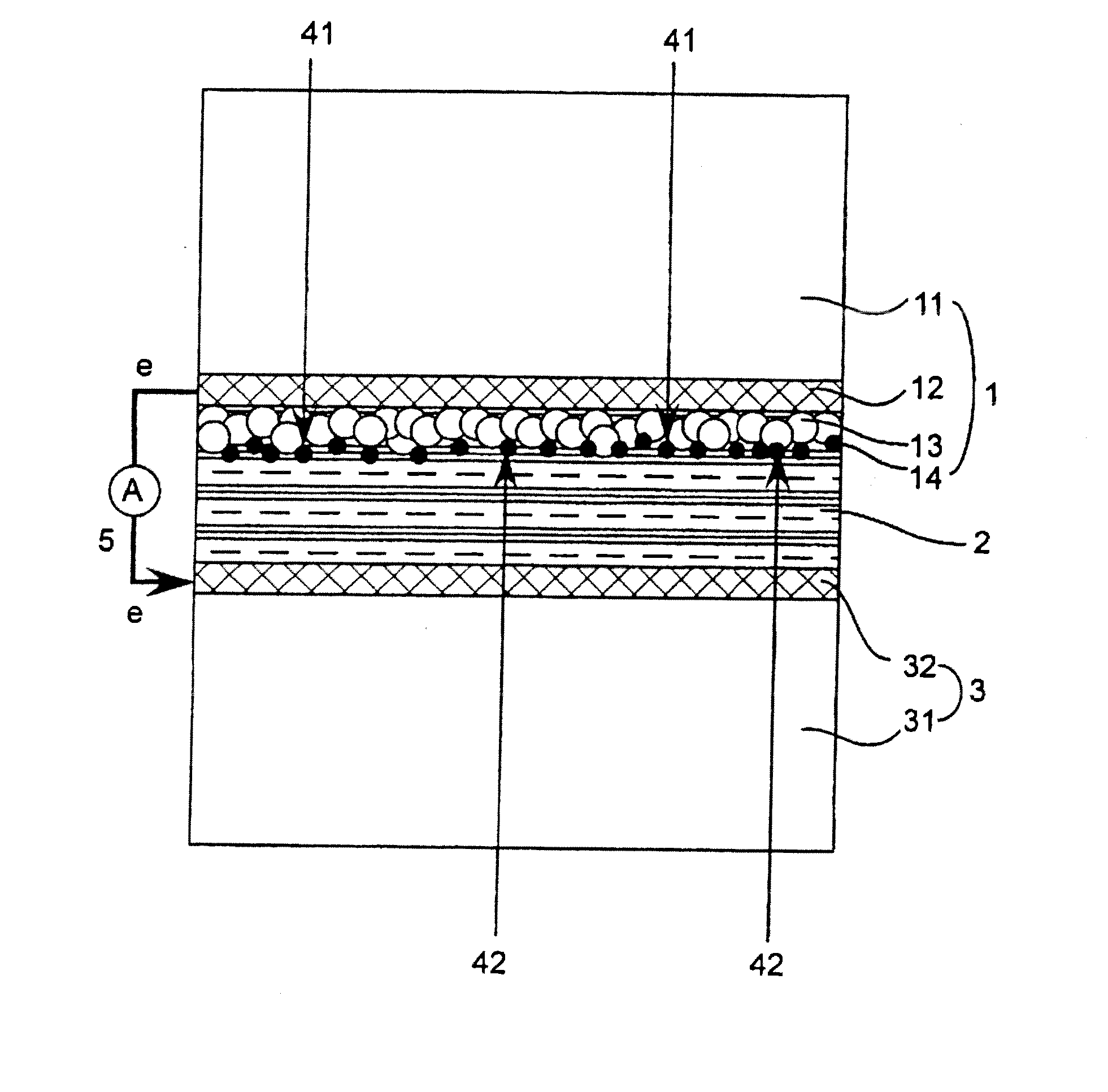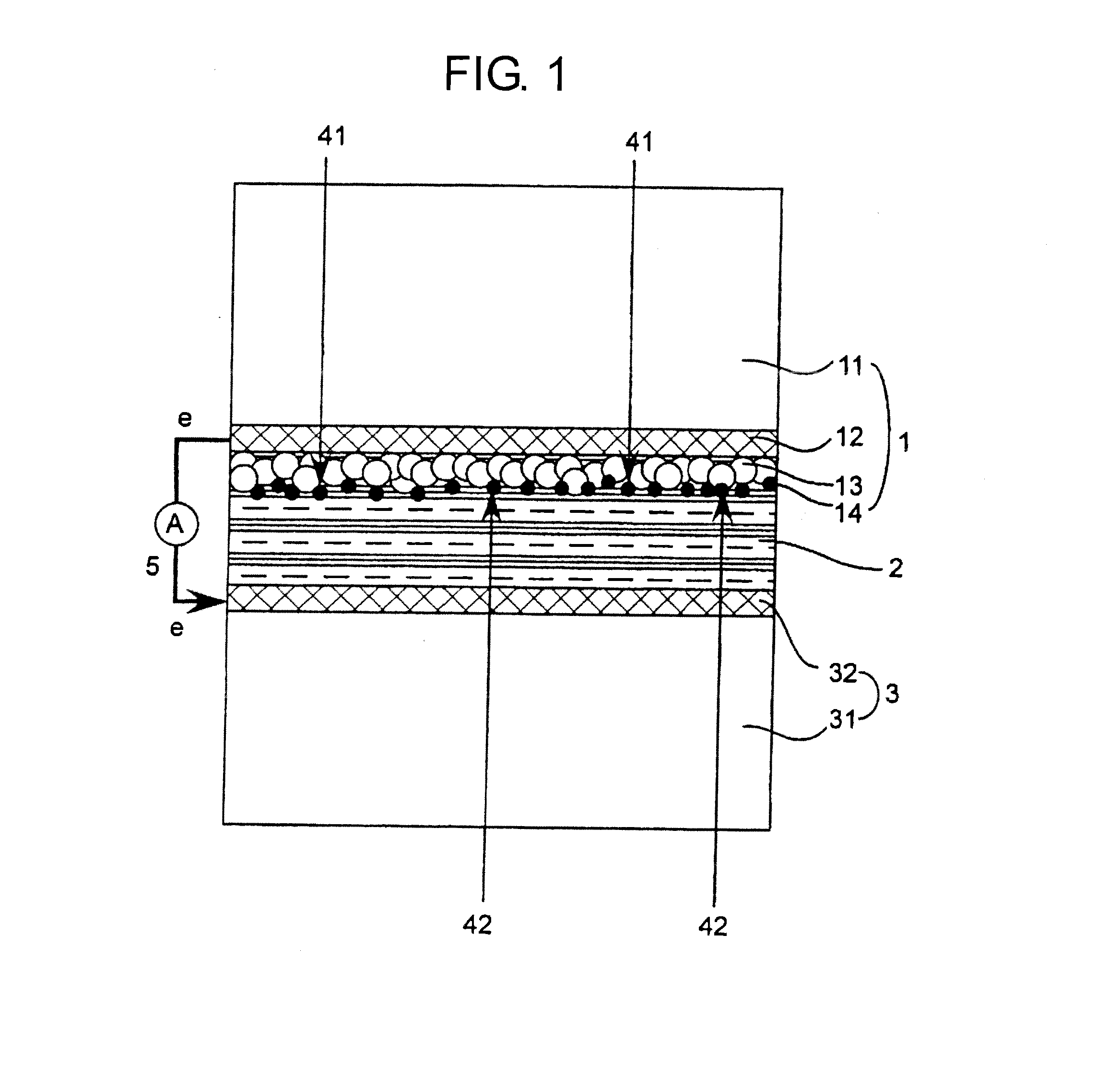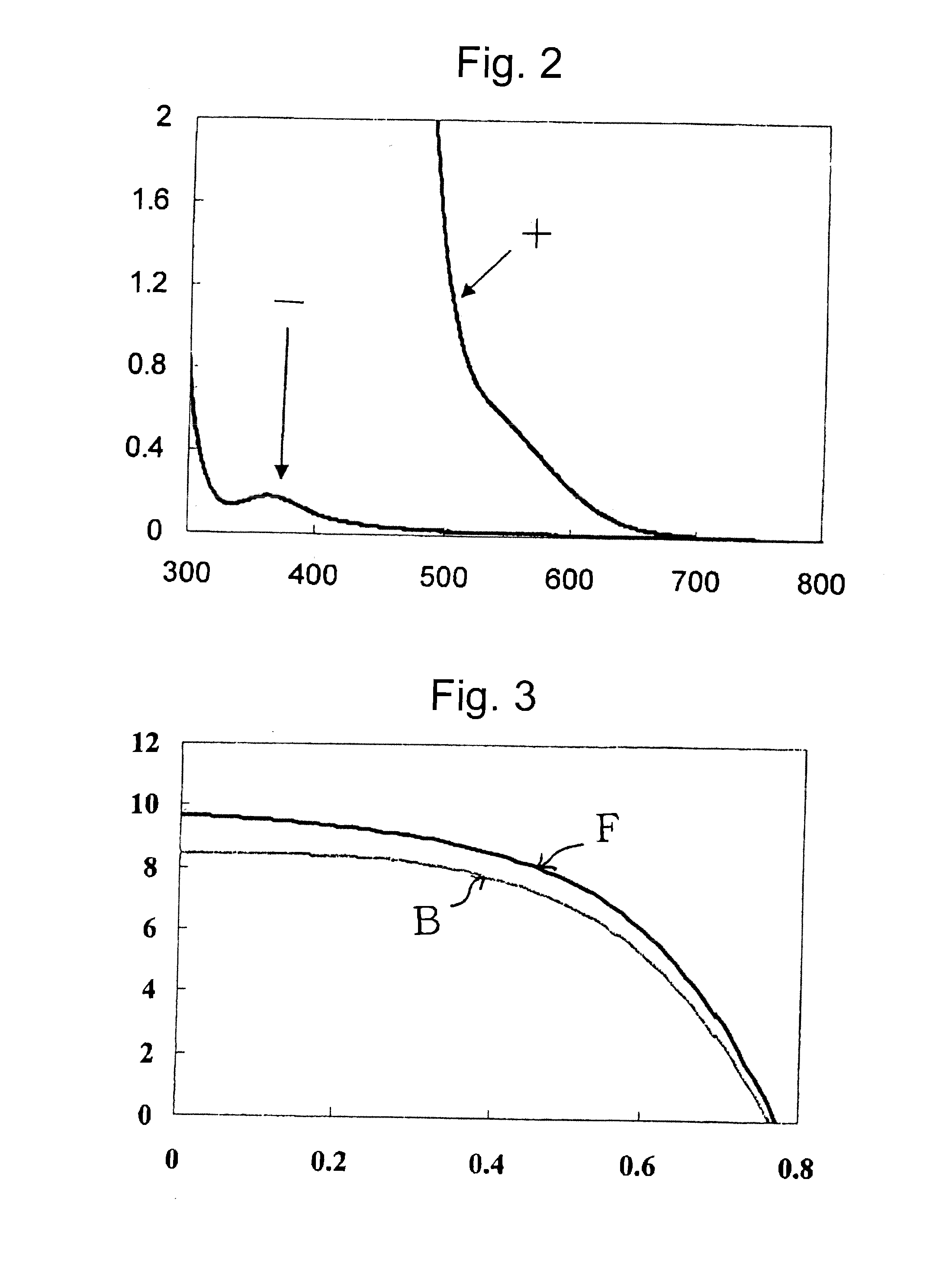Dye-sensitized photoelectric conversion element
- Summary
- Abstract
- Description
- Claims
- Application Information
AI Technical Summary
Benefits of technology
Problems solved by technology
Method used
Image
Examples
example 1
(1) Preparation of Electrolyte Solution
[0167]In a measuring flask of 5 mL, 0.066 g of N-methylbenzimidazole, 0.738 g of tetrabutylammonium iodide, 0.532 g of 1,3-butylmethylimidazolium iodide, and 0.58 g of guanidine thiocyanate was placed. Propylene carbonate was added to the mixture to give a total amount of 5 mL. The mixture was stirred with vibration for 1 hour in an ultrasonic wave washing machine. The flask was placed in a dark calm place for 24 hours to prepare an electrolyte solution containing no iodine.
[0168]A reference electrolyte solution containing iodine was prepared adding 0.04 M of iodine to the above-prepared electrolyte solution. Absorption spectra of the electrolyte solution containing no iodine and the solution containing iodine were measured at optical pass length of 1 mm. The results are shown in FIG. 2.
[0169]FIG. 2 is absorption spectra of the electrolyte solution containing no iodine (−) and the solution containing iodine (+), which is in the form of triiodid...
example 2
[0186]A dye-sensitized photoelectric conversion device was prepared in the same manner as in Example 1, except that γ-butyrolactone was used in place of propylene carbonate in preparation of electrolyte solution of Example 1 (1).
[0187]The obtained dye-sensitized photoelectric conversion device was evaluated in the same manner as in Example 1 (6). The obtained output current was excellent in analogy to that of Example 1. Further, the result of light incident on the front side is analogous to that of light incident on the backside.
[0188]Further, the dye-sensitized photoelectric conversion device was evaluated in the same manner as in Example 1 (6), except that output current was measured while inclining the device at 60° to light. The output current was compared with that of light perpendicularly incident to the device. The former result was 80% of the latter result.
[0189]The durability of the dye-sensitized photoelectric conversion device was evaluated in the same manner as in Exampl...
example 3
[0190]A dye-sensitized photoelectric conversion device was prepared in the same manner as in Example 1, except that 3-methoxypropionitrile was used in place of propylene carbonate in preparation of electrolyte solution of Example 1 (1).
[0191]The obtained dye-sensitized photoelectric conversion device was evaluated in the same manner as in Example 1 (6). The obtained output current was excellent in analogy to that of Example 1. Further, the result of light incident on the front side is analogous to that of light incident on the backside.
[0192]The durability of the dye-sensitized photoelectric conversion device was evaluated in the same manner as in Example 1 (7). The output current was reduced by about 6% after the durability test.
PUM
 Login to View More
Login to View More Abstract
Description
Claims
Application Information
 Login to View More
Login to View More - R&D
- Intellectual Property
- Life Sciences
- Materials
- Tech Scout
- Unparalleled Data Quality
- Higher Quality Content
- 60% Fewer Hallucinations
Browse by: Latest US Patents, China's latest patents, Technical Efficacy Thesaurus, Application Domain, Technology Topic, Popular Technical Reports.
© 2025 PatSnap. All rights reserved.Legal|Privacy policy|Modern Slavery Act Transparency Statement|Sitemap|About US| Contact US: help@patsnap.com



